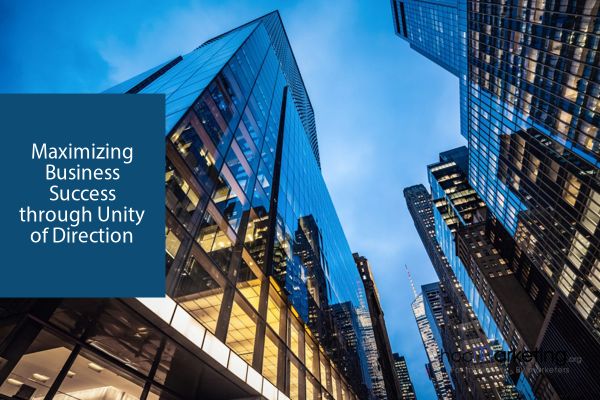
What Are the Different Types of Physical Barriers?

Physical barriers hinder communication by creating obstacles that obstruct the effective transfer of information These barriers can take on various forms and are prevalent in different settings, such as the workplace Understanding the types and causes of physical barriers is crucial in developing strategies to overcome them and promote effective communication
These barriers can manifest in various forms, such as walls or closed doors, and are readily apparent. When the distance between the sender and receiver is substantial, the physical barrier becomes even more pronounced.
Physical barriers can create significant disturbances in communication, including noise, technological issues, and problems with the organizational environment. These disruptions can be caused by a range of factors, from thunder to disconnection of calls to issues with reception. Overcoming these barriers can be a daunting task, but it is important to take the time to identify them in order to find effective solutions. Adapting communication techniques to suit the situation is key to successfully navigating these challenges. Failure to do so can lead to serious problems in communication.
Types of physical barriers
The various types of physical barriers are as follows
1. Noise
When we hear the word "noise," we often think of loud chatter or disruptive sounds. In the context of communication, noise refers to any interference that disrupts the flow of a message. This interference can create confusion, inaccuracies, and ultimately hinder productivity. Physical barriers such as technological noise, written noise, and environmental noise can all contribute to communication noise and hinder the ability for a message to reach its intended recipient. At times, the noise can be so overwhelming that the message is completely lost.
can also be a form of noise, where the original message is altered or blurred during transmission. This can happen due to factors such as poor signal strength or interference from other signals in the same channel. In digital communication, distortion can also occur due to errors in coding or decoding the message. It is important to minimize noise and distortion in communication to ensure the message is received accurately and effectively.
When a message is sent, the meaning can become distorted, resulting in misrepresentation. This can happen due to physical barriers such as the encoding and decoding process during handling, causing the actual meaning to be lost. Additionally, human perception can also easily distort the message's intended meaning.
3. Information overflow
Sometimes, the communication fails as the information is more than the amount that can be received by the sender at that specific time.
The incomplete transmission of information can lead to misunderstandings or errors in interpretation, ultimately hindering effective communication and serving as a barrier to successful message delivery.
Causes of physical barriers
The various causes are as follows
1. Environment
Environmental factors can be a significant cause of physical barriers that hinder effective communication. Factors such as wind, rain, and thunder can create a constant noise that disrupts the flow of information. Despite being a natural occurrence, this background noise can still pose a challenge to communication. Additionally, adverse weather conditions, improper lighting, and sudden thunder can further distort messages. Unstable temperatures can also contribute to physical barriers, as extreme heat or cold can make it difficult for individuals to concentrate fully on the information being conveyed.
constraints can also contribute to an unfocused message and hinder effective communication. When there is not enough time to convey the message properly, important details may be left out or misunderstood. This can lead to confusion and errors in decision-making. Therefore, it is important to ensure ample time for communication to occur in a clear and concise manner.
Sending a message at an inappropriate time or when there is a shortage of time can lead to physical barriers, hindering effective communication. It is crucial to ensure that the timing of the message is appropriate to avoid any discrepancies due to the difference in time zones between the sender and receiver.
between the two countries is not the only challenge in this scenario. The time zone difference can make scheduling a call difficult and can also impact the quality of communication. Therefore, it is important for individuals to be aware of the time zone difference and plan accordingly to ensure smooth communication.
Furthermore, personal communication may not be possible and alternatives such as emails, messages, video-conferencing, or phone calls may need to be utilized. This can result in a loss of non-verbal cues and a decrease in the richness of the communication.
Technological advancements have made it possible to reduce the noise to a higher degree in the channels and mediums.
4. Technical problems
Technical issues often serve as a primary source of physical barriers in communication. The distance that must be traveled, as well as any potential disruptions along the way, can greatly impact the channels and mediums of communication utilized.
Given the prevalence of technical and mechanical problems, it is crucial to select communication mediums that are least susceptible to interference or noise along their routes.
Types of physical barriers in the workplace and methods of overcoming them
and acoustics, cramped workspace, lack of privacy, and distance between employees. These barriers not only hinder effective communication but also affect the overall productivity of the organization. It is important for organizations to identify and eliminate these physical barriers to create a conducive environment for effective communication and collaboration among employees. By doing so, organizations can enhance their communication channels, build stronger teams, and achieve their goals more efficiently.
Background noise
Closed doors
Broken equipment that is used as a communication tool
Uncomfortable temperatures
Old equipment used for communication
Geographical distances between the sender and receiver of the messages
The numerous ways to overcome the physical barrier in a workplace are as follows-
1. Providing open office spaces
Instead of closed workspace designs, open office spaces can provide a more conducive environment for communication and collaboration. With visible barriers removed, employees can easily exchange ideas, give feedback, and make plans on the spot. This can lead to improved workflow and productivity, making open-concept offices a popular choice for many organizations.
2. Send short and precise messages
Choose the correct words while sending digital messages or email so that the short message makes communication more valuable.
3. Personal communication
Face to face personal communication is one of the best ways to remove physical barriers of any form
Video conferencing has proven to be a valuable tool for organizations looking to overcome physical barriers. By allowing employees to connect virtually, it reduces the need for travel and promotes collaboration among teams.
Not understanding the medium of communication can lead to physical barriers in conveying thoughts and emotions. Signs and symbols are powerful tools in communication and should not be overlooked.
In summary, physical barriers can hinder effective communication in various settings. However, they can be easily identified and addressed. It is crucial to prioritize face-to-face communication as it is the most effective way to overcome these barriers.
This allows the individuals to put their onus on the tasks at hand in an effective manner.















